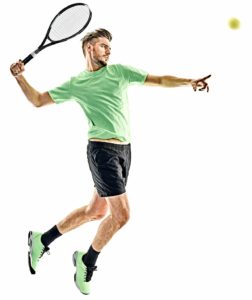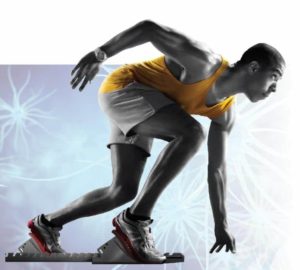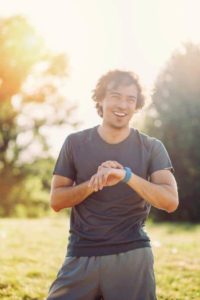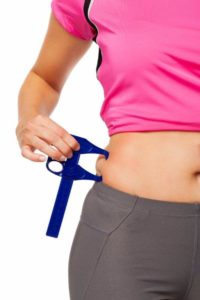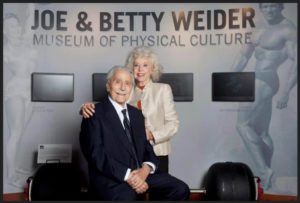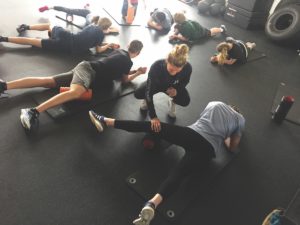Client Handouts/Tips for Clients
Phytoestrogens and the Safety of Soy
Are phytoestrogens safe? The growing popularity of soy products in U.S. and European diets has raised considerable controversy.
Tennis: Reduce Pain, Improve Performance
Tennis is one of the most popular sports in the world. In the U.S. alone, there are almost 18 million players, with another 14 million expressing interest (TIA 2018). Unfortunately, the dynamic, forceful twists and turns of the game pose ever-present injury risks to players (Roetert & Kovacs 2011).
If your fitness clientele includes people interested in playing this sport, you need to understand the causes of tennis-related injuries. This will help you develop strategies to improve movement function, reduce pain and keep clients on the court.
Sports Teams Go To Bat For Junk Food
Here is just one more reason why playing a sport is healthier than sitting on the couch watching a game. Researchers from NYU School of Medicine analyzed advertisements associated with the 10 professional sports organizations most popular among fans aged 2–17. Focusing on ads on TV, YouTube and team websites, the scientists set out to determine whether marketing was influencing the consumption of certain foods and nonalcoholic beverages.
Caffeine Boosts Performance in Athletes Who Use It Rarely
Caffeine stimulates the central nervous system, allowing athletes of all stripes to complete longer, harder workouts. But new research suggests that people who usually avoid coffee and energy drinks likely benefit the most from caffeine.
Why We Eat Too Much at Night
It’s 10 p.m., you’re catching up on email, and it suddenly hits you: a Goliath-sized craving for chocolate-chunk ice cream. Findings in the International Journal of Obesity show why the evening hours pose such a high risk for overeating and unhealthy munching. For the study, researchers from Johns Hopkins University School of Medicine recruited 32 adults with excess weight who volunteered for two experimental protocols:
Researchers Find a Link Between Activity Level, ALS
Made famous by legendary baseball player Lou Gehrig, amyotrophic lateral sclerosis, or ALS—a progressive neurodegenerative disease that affects nerve cells in the brain and spinal cord—has affected many athletes. As such, researchers have wondered if high levels of physical activity might have something to do with the disease. Data from a new study out of Europe furthers the conversation.
The Long-Term Benefits of Pedometer Use
Studies show that tracking daily steps with a pedometer leads to higher activity levels. A new report out of the U.K. suggests the practice can inspire people to take more steps for many years.
The report included data from two separate 12-month studies; one involved inactive adults aged 45–75, while the other featured older adults aged 60–75. In the first, participants were assigned to one of three 12-week pedometer-based interventions—consultation with a nurse, support by mail or no consultation. In the second, there was no mail support group.
Research Review: Pros and Cons of Standing
Sitting for extended periods of time is now considered as dangerous as smoking cigarettes, and as a result, many people have taken to standing during the workday. New research is shedding light on both positive and negative effects of the current trend.
Stand Up for Weight Loss
Body Fat Is Better Indicator of Type 2 Diabetes
Here’s more reason to apply a battery of assessments when determining a client’s health status. Scientists have found that body fat percentage is a more accurate indicator of a person’s risk for prediabetes or type 2 diabetes than other popular measures like body mass index.
On This Day in Fitness History
July 21, 2011, was the grand opening of the Joe and Betty Weider Museum of Physical Culture at the University of Texas in Austin. The Weiders are fitness industry icons, and the museum features fitness-related art and memorabilia, including items from the Weiders’ personal collection: three large oil paintings by artist Thomas Beecham of Mr. Olympia winners Larry Scott, Franco Columbu and Lee Haney.
Are You as Active as You Think You Are?
When it comes to physical activity levels, our self-perceptions shouldn’t always be trusted, say researchers across the U.S. and Europe.
Research Update: The Value of Exercise for Women’s Health
Fitness pros have a unique opportunity to take a leadership role by guiding their female clients toward a healthier, movement-oriented lifestyle. This women’s health research update discusses contemporary scientific findings you can use to educate your clients and plan up-to-date programs.
Why Water Fitness?
While water fitness was once the domain of older adults, now participants of all ages and ability levels are benefiting from aquatic workouts. Shirley Archer, JD, MA, water fitness specialist and health and wellness blogger, examines what’s new in aquatic training research and looks at different types of programs.
Research Update
Here are some of the newer findings related to aquatic training:
Sample Class: Step With Variations
Step classes are still alive! Many participants remain eager for creative yet easy-to-follow choreography. You can keep yours simple while retaining some of the frills that people enjoy. Here’s an example: This class starts with one 32-count step combination for the warmup and continues with four variations on that combo during the main segment. Try this choreography during your next step class.
Step With Variations Details
GOAL/EMPHASIS:cardiovascular workout with classic 32-count step choreography
Teaching Yoga at the Wall
As a yoga teacher, you guide participants through a practice that deepens their understanding of asanas (poses) and how these take shape in students’ bodies. You cue, coach, align, adjust, demonstrate and discuss, and you offer tips on breathing, anatomy, “feel” and sensation. Often, the most effective way to help participants understand a specific element is to slow down, grab a prop or two, and work a little deeper. You may have access to straps, blocks and bolsters, but you might be forgetting another perfect “prop”: the wall.
A for Effort
client: Kent Denver School Students | personal trainer: Laura Bordeaux, strength and conditioning coach, Kent Denver School location: Englewood, Colorado
A complete course load. Think of it as core curriculum—literally. The Kent Denver School, a college-preparatory institution outside of Denver, offers a comprehensive educational experience that emphasizes both academics and sports. That’s where Laura Bordeaux comes in.
Stand Up to Aging
Getting up off the ground grows more difficult as we age. Muscles and bones weaken, coordination becomes less fluid, and simply doing chores around the house gets more challenging. Ground-to-standing (G2S) exercises address these changes. hile even performance athletes can benefit from G2S drills (see the sidebar “G2S Exercises Also Help Performance Athletes”), they’re supremely helpful for older exercisers who are at risk for broken hips and other threats to their mobility.
Barre Moves for Core Development
Barre classes focus on the core throughout the entire workout and have many ardent followers. Why not use barre-inspired moves in the core section of your HIIT or boot camp class? Your participants will love these variations on classic core fundamentals!
The Pancreas: Two Glands in One
Located behind the stomach in the upper abdomen, the pancreas is a glandular organ that has two primary “jobs.” It is both a digestive exocrine gland (secreting products via ducts) and a hormone-producing endocrine gland (secreting substances directly into the bloodstream). The pancreas excretes enzymes to break down the foods we eat, and it secretes insulin and glucagon to control blood sugar (Taylor 2018). Spongy, and shaped like a flat pear, it’s about 6–10 inches long (Columbia University Medical Center 2018).
High-Intensity Interval Training for Fat Loss
Two recent studies reveal that high-intensity interval training has the ability to produce high-impact fitness gains in a short time frame.

